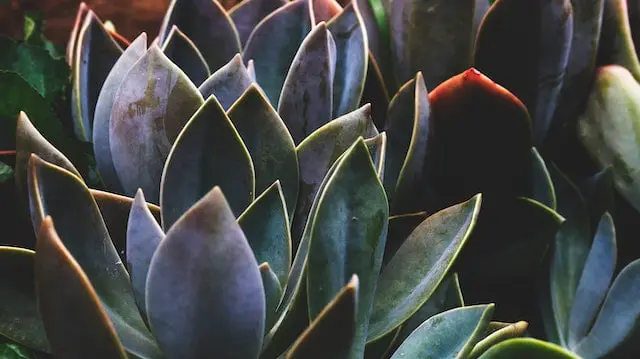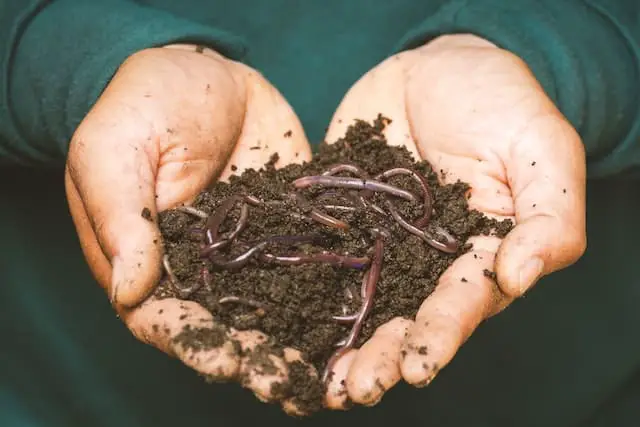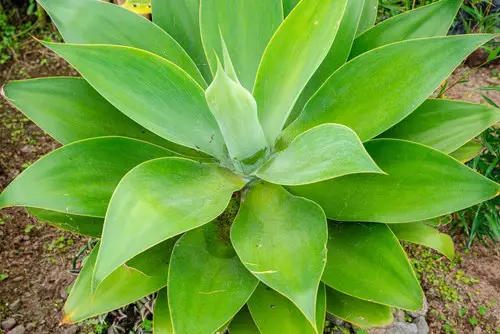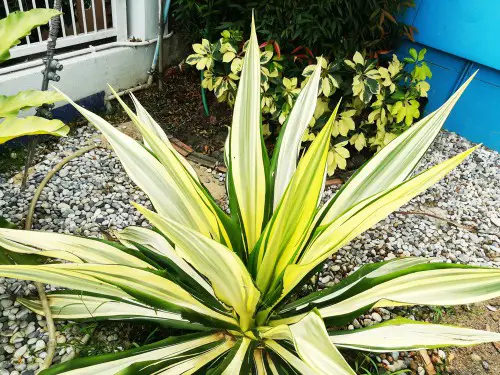Agave plants are a popular choice for gardeners and homeowners alike due to their striking appearance and low maintenance requirements. However, one common issue that can arise with these plants is yellowing leaves.
Agave leaves turning yellow can be a sign of an underlying problem, such as overwatering, nutrient deficiencies, or pest infestations. It is important to recognize the signs of yellowing leaves and take appropriate action to prevent further damage to the plant.
To understand the causes of yellowing agave leaves, it is important to examine the plant itself. Agave plants are desert plants and are adapted to thrive in dry, arid conditions. Overwatering can lead to root rot, which can cause the leaves to turn yellow.
Nutrient deficiencies can also cause yellowing leaves, as the plant may not be receiving the necessary nutrients to maintain its health. Additionally, pest infestations can cause damage to the leaves, leading to yellowing and discoloration.
Prevention and treatment of yellowing agave leaves depends on the underlying cause. It is important to examine the plant and identify any signs of overwatering, nutrient deficiencies, or pest infestations.
Adjusting watering schedules, fertilizing appropriately, and treating any pest infestations can help to prevent further damage and promote healthy growth. By understanding the causes of yellowing agave leaves and taking appropriate action, gardeners can maintain the health and beauty of their agave plants.
Key Takeaways
- Yellowing agave leaves can be a sign of an underlying problem, such as overwatering, nutrient deficiencies, or pest infestations.
- Prevention and treatment of yellowing agave leaves depends on the underlying cause and may involve adjusting watering schedules, fertilizing appropriately, and treating any pest infestations.
- By understanding the causes of yellowing agave leaves and taking appropriate action, gardeners can maintain the health and beauty of their agave plants.
Check out these other related posts:
Recognizing Yellowing Agave Leaves

Yellowing leaves on an agave plant can be a sign of several issues. It is important to identify the cause of the yellowing to prevent further damage to the plant. Here are some signs to look for when recognizing yellowing agave leaves:
1. Leaf Color
The first sign of yellowing agave leaves is a change in color. The leaves may turn from green to yellow or brown. The color change may start at the tips of the leaves and spread inward. In severe cases, the entire leaf may turn yellow or brown and eventually fall off.
2. Leaf Texture
Yellowing agave leaves may also have a different texture than healthy leaves. They may feel softer or mushy to the touch. This could be a sign of overwatering or root rot.
3. Leaf Position
Yellowing agave leaves may droop or wilt. This could be a sign of underwatering or nutrient deficiency. In severe cases, the entire plant may droop or wilt.
4. Leaf Edges
Yellowing agave leaves may have brown or black edges. This could be a sign of sunburn or leaf scorch. It could also be a sign of fungal or bacterial infection.
5. Other Signs
Other signs of yellowing agave leaves include:
- Leaf spots or lesions
- White or gray powdery coating on leaves
- Insect infestation
It is important to identify the cause of yellowing agave leaves to prevent further damage to the plant. The next section will cover some common causes of yellowing agave leaves and how to fix them.
Agave Leaves Turning Yellow – 6 Common Problems

Agave plants are hardy and low maintenance, but they can be susceptible to yellowing leaves due to various reasons. In this section, we will explore the different causes of agave leaves turning yellow.
1. Overwatering and Underwatering
Overwatering and underwatering are two of the most common causes of yellowing agave leaves. Overwatering can lead to root rot and nutrient deficiencies, which can cause the leaves to turn yellow. On the other hand, underwatering can cause the plant to become dehydrated, leading to yellowing and wilting leaves.
To prevent overwatering and underwatering, ensure that the soil is moist but not waterlogged and water the plant only when the top inch or two of the soil is completely dry.
2. Temperature and Humidity
Agave plants thrive in warm and dry conditions, but they can be sensitive to extreme temperatures and humidity levels. High humidity can cause fungal growth, such as mildew and powdery mildew, on the leaves, leading to yellowing and browning.
Extreme temperatures, both hot and cold, can also cause stress to the plant, leading to yellowing leaves. Keep the plant in a well-ventilated area with temperatures between 60°F and 85°F and humidity levels between 30% and 50%.
3. Sunlight Exposure
Agave plants require plenty of sunlight to grow and thrive, but they can be sensitive to direct sunlight. Too much direct sunlight can cause the leaves to become scorched and turn yellow. Ensure that the plant is placed in an area with bright, indirect sunlight or partial shade.
4. Pest Infestation
Agave plants can be vulnerable to pest infestations, such as the agave snout weevil. These pests can cause damage to the roots and leaves, leading to yellowing and wilting. Inspect the plant regularly for signs of pest infestation, such as holes in the leaves or chewed roots, and treat the plant with insecticides if necessary.
5. Nutrient Deficiency

Agave plants require specific nutrients to grow and thrive, and a lack of these nutrients can cause yellowing leaves. Nitrogen deficiency, for example, can cause the leaves to turn yellow and brown. Ensure that the plant is fertilized with a balanced fertilizer every three months to provide the necessary nutrients.
6. Disease and Infection
Agave plants can be susceptible to various diseases and infections, such as fungal leaf spot and root rot. These diseases can cause yellowing and browning of the leaves. Ensure that the plant is kept in a well-ventilated area with good air circulation and that the soil is well-draining to prevent fungal growth and root rot.
Examining the Agave Plant
When agave leaves turn yellow, it is important to examine the plant to determine the cause of the problem. Here are some aspects of the agave plant to examine:
1. Soil Conditions
Agave plants require well-draining soil with a pH between 6.0 and 7.0. If the soil is too acidic, it can lead to nutrient deficiencies that cause the leaves to turn yellow. On the other hand, if the soil is too alkaline, it can lead to root rot and other problems. To ensure the soil is healthy for agave plants, it should be tested regularly and amended as necessary.
2. Root Health
Root rot is a common problem that can cause agave leaves to turn yellow. To check for root rot, gently remove the plant from the soil and examine the roots. Healthy roots should be firm and white, while roots affected by root rot will be mushy or soft and brown or black in color.
If root rot is detected, it is important to treat the plant immediately to prevent further damage.
3. Leaf Condition
Agave leaves should be examined for signs of disease or damage. Leaf spots, for example, can be a sign of fungal or bacterial disease. If the leaves are damaged, it can also lead to yellowing. Healthy agave leaves should be spiky and green in color.
4. Sap Examination
Examining the sap of an agave plant can also provide clues to the cause of yellowing leaves. If the sap is clear, it is a sign that the plant is healthy. However, if the sap is discolored or has an unpleasant odor, it can be a sign of disease or damage.
By examining these aspects of the agave plant, it is possible to determine the cause of yellowing leaves and take appropriate action to treat the plant.
Prevention and Treatment

Agave leaves turning yellow can be prevented and treated by following proper care and maintenance practices. Here are some sub-sections that can help prevent and treat yellowing agave leaves.
1. Proper Watering
Overwatering is the most common cause of yellowing agave leaves. To prevent this, make sure to water the plant only when the soil is dry to the touch. The watering schedule will depend on the moisture level, drainage system, and amount of water the plant needs.
Ensure that the pot has proper drainage holes to prevent water from accumulating at the bottom.
2. Temperature Control
Agave plants thrive in warm temperatures and can be sensitive to cold temperatures. Avoid exposing the plant to cold temperatures, especially during the growing season. If the plant is grown indoors, make sure to place it in an area with proper ventilation to regulate the temperature and humidity levels.
3. Sunlight Management
Agave plants require ample sunlight to photosynthesize and produce chlorophyll. However, too much direct sunlight can cause sunburn, which can lead to yellowing leaves. Provide the plant with partial shade during the hottest part of the day to prevent sunburn.
4. Pest Control
Pests such as mealybugs and spider mites can cause yellowing leaves. To prevent pest infestation, regularly inspect the plant for signs of insects and treat them with an appropriate insecticide if necessary.
5. Nutrient Management
Agave plants require proper nutrients, such as nitrogen, magnesium, and iron, to maintain healthy growth. Fertilize the plant with an appropriate fertilizer or Epsom salt solution to provide the necessary nutrients.
6. Disease Control
Diseases such as root rot can cause yellowing leaves. To prevent disease, make sure to repot the plant when necessary and avoid transplant stress. Check the pH level of the soil and adjust it if necessary to prevent nutrient deficiencies.
By following these prevention and treatment methods, agave leaves can be kept healthy and prevent yellowing.
Additional Considerations

In addition to the common causes of yellowing agave leaves, there are a few other considerations to keep in mind when caring for these plants.
1. Gardeners in arid regions
Agave plants are native to arid regions, and as such, they are adapted to dry conditions. In fact, overwatering is one of the most common causes of yellowing agave leaves. Gardeners in arid regions should be especially careful not to overwater their agave plants.
2. Humidity and moisture
While agave plants are adapted to dry conditions, they still require some moisture to thrive. In areas with high humidity, agave plants may not receive enough moisture from the air to meet their needs. In these cases, it may be necessary to water the plants more frequently.
3. Balanced fertilizer
Agave plants do not require a lot of fertilizer, but they do benefit from a balanced fertilizer applied once or twice a year. Over-fertilizing can cause yellowing leaves, so it is important to follow the manufacturer’s instructions when applying fertilizer.
4. Waterlogged soil
Agave plants are susceptible to root rot, which can be caused by waterlogged soil. To prevent root rot, it is important to ensure that the soil is well-draining and that the plant is not overwatered.
By keeping these additional considerations in mind, gardeners can ensure that their agave plants remain healthy and vibrant.
Frequently Asked Questions
What causes yellow spots on agave leaves?
Yellow spots on agave leaves can be caused by a variety of factors, including overwatering, underwatering, pests, or diseases. One common cause of yellow spots is a fungal infection called anthracnose. This can be prevented by avoiding overhead watering and ensuring good air circulation around the plant.
How do you prevent agave leaves from turning yellow?
To prevent agave leaves from turning yellow, it is important to provide the plant with the right growing conditions. This includes well-draining soil, adequate sunlight, and proper watering. Agaves are drought-tolerant plants, so it is important not to overwater them. Regularly inspect the plant for signs of pests or diseases and treat them promptly.
What are the common reasons for agave bottom leaves dying?
Agave bottom leaves can die for a variety of reasons, including natural aging, overwatering, underwatering, pests, or diseases. If the bottom leaves are turning yellow or brown and are easily removed from the plant, this is likely a natural aging process. However, if the leaves are mushy or black, this could indicate root rot caused by overwatering.
How can you tell if an agave is overwatered?
An agave that is overwatered may have yellow or brown leaves that are mushy to the touch. The plant may also have a soft or black stem and a foul odor. The soil around the plant may be excessively wet, and the roots may be rotting. To prevent overwatering, allow the soil to dry out completely between waterings.
What is the best way to water agave plants?
The best way to water agave plants is to give them a deep watering once every two to three weeks. Allow the soil to dry out completely between waterings, and avoid overhead watering, which can lead to fungal infections. Agaves are drought-tolerant plants and can survive extended periods without water.
What are the solutions to save a dying agave plant?
If an agave plant is dying, it is important to identify the cause and take corrective action. This may include adjusting the watering schedule, treating pests or diseases, or repotting the plant in fresh soil. If the plant is severely damaged, it may not be possible to save it. In this case, it is best to remove the plant and start fresh with a new agave.

Hey, I’m Lisa and I’ve been an avid gardener for over 30 years. I love writing, talking and living in the garden! Feel free to connect with me on my socials below


